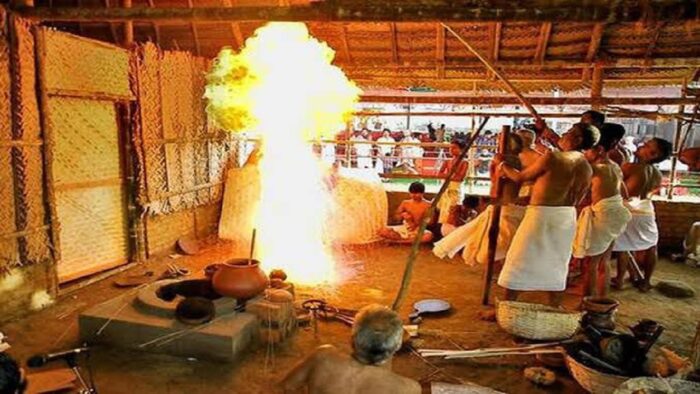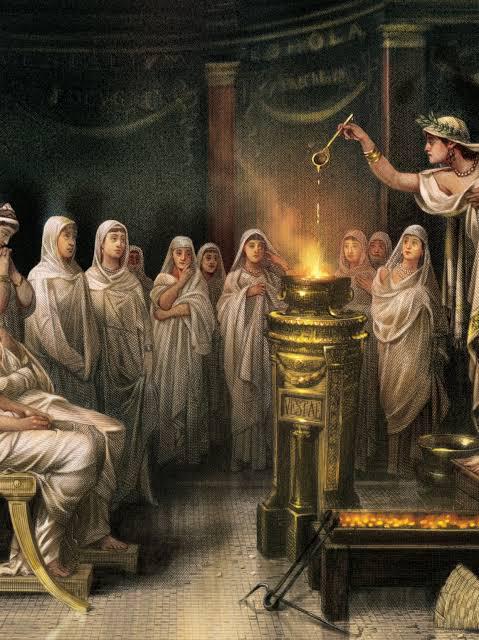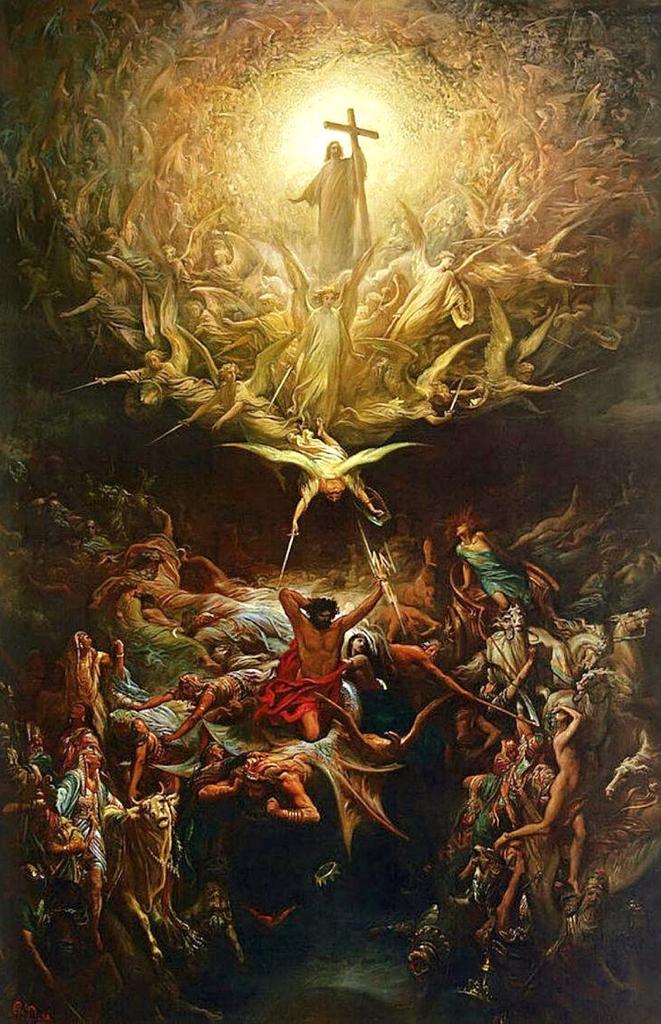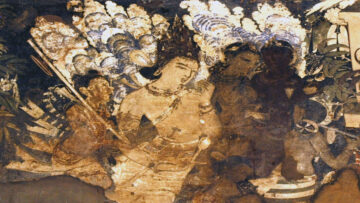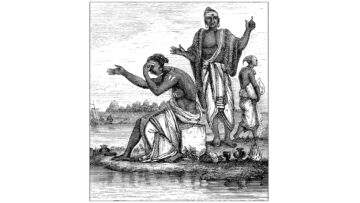Introduction
This is the third of my series of articles on rituals in Indian culture. This article was originally going to address the question: What is the value of rituals (Vedic or otherwise) in twenty first century India? That is to say, how does it contribute to human happiness and flourishing? These are basic but important questions that today’s generation of young Indians are raising. They need to be answered, and answered in the form of coherent, logical, and systematic explanations. Otherwise, there is a disturbing possibility that these rituals and traditions will die out as early as a generation or two from now.
But I came to the sobering realization that it is not possible to answer these questions, not with the state of knowledge we have today. All we have are ad hoc explanations, and one line answers that are empty and unsatisfactory. As mentioned in the first article, many Indians intuitively feel that rituals are important but are unable to articulate why. There is a sense that ritual is one of the foundational components that sustains the culture as a whole. When Frits Staal asked a group of Nambudiri Brahmins as to why they perform rituals, the answers were:
”we do it because our ancestors did it; because it is good for society; because it is our duty (dharma); because it is said to lead to immortality” (Staal, 1979, p. 3)
These answers encapsulate three of the four purusharthas. These Brahmins felt that rituals play an instrumental role in obtaining artha (they are good for the sustenance of society), dharma, and moksha.
The notion of rituals as mula (or foundation) has been part of our cultural commonsense for centuries. Vedas are often referred to as dharma mula and jnana mula. And yet, Indians today are unable to explain how and in what sense the karma kanda of the Vedas are the mula for the knowledge found in the jnana kanda.
What if we change gear and reformulate the above questions in the form of a thought experiment: What would happen if all Indians suddenly stopped performing rituals? This includes the myriad varieties of pujas, homas, and yajnas. What would happen to Indian culture?
Such is the sad state we find ourselves in today, that despite the fact that rituals are ubiquitous in Indian society, and that our ancestors developed a science of ritual, today’s Indians are unable to explain what rituals are, how they organize our daily lives and interactions, and what we can learn from studying them. Nor can we say what would happen to our culture if they disappeared.
How did we get to this state? Given that we are not in a position to explain (in a structured and systematic manner) the value of rituals and what they offer to Indian society, what do we do? What is the course of action that Indian intellectuals (and also non-Indian intellectuals who care about the health and well being of Indian culture) should be undertaking, so that we eventually go from a state of ignorance to knowledge about rituals.
All we can do is think about how we got to this point, and raise important research questions and problems that will help us in obtaining knowledge. That will be the primary goal and focus of this article. I begin this article with a brief note about our current state of knowledge about rituals, as well as attitudes towards rituals that are prevalent in Indian society today. The second part of this article will examine how the experience of colonialism gave rise to certain ways of thinking and talking about rituals that wasn’t present before. In the third and fourth parts of the article, I propose ideas and problems for future research as it pertains to rituals. The third part of the article will raise questions related to the sociology of rituals in Indian culture: namely, their formative role in the socialization process, from child rearing to social relationships. In particular, this section will ask questions about the link between rituals and dharma; The fourth part of the article will suggest avenues for research that explore how thinking about and reflecting upon rituals could possibly lead to the emergence of atma jnana (self knowledge).
Our Current State
There are two main reasons for the lack of knowledge. Firstly, there is a paucity of research on ritual, its basic properties, what role they play, if any, in structuring the different facets of Indian culture, from ethics, to the way we think about human psychology.
The second reason (which perhaps partially contributed to the first reason) is the impact that colonialism has had on knowledge production. India was under two colonialisms: Islamic and British. Under Islamic colonialism, Indians lost the ability to reflect on our experience (anubhaava). This was a devastating blow to the intellectual life of the society, since anubhaava was the means through which various intellectual traditions arose and flourished, such as Mimamasa, Vaiseshika, Samkhya, and Vedanta. Each of these traditions produced their own method of anubhaava, as well as rich theories about human behaviour and psychology. These included theories and insights about rituals as well. By the time the British arrived in India, these traditions had already stagnated and withered away. One of the important features of British colonialism was that it was among other things, an educational project. The British displaced the native education system with their own. This educational system foisted the colonizer’s descriptions and attitudes towards the native culture onto the Indian subjects. This was an inherently violent enterprise, because it is one culture’s experience of another culture being presented as rational, objective truth. In the process, the Indian experience of their own culture was distorted and denied. The Indians who went through this educational system, learnt to reproduce the European descriptions and attitudes towards their traditions and rituals.
As I show in this article, the basic framework of this colonial education system continues to exist in modern day India and guide our notions of what a ritual is, and our attitudes towards them.
During a conversation with one of my friends a few weeks back, the topic of rituals came about. This friend of mine comes from an orthodox Brahmin-Iyer family and was talking about how his mother was concerned and disappointed that he wasn’t following most of the rituals of his forefathers, particularly, the pitrutithis in which one performs rituals towards one’s ancestors. One of the problems he had with these rituals was that they were ”unnecessarily complicated”, and that the focus is on following the rules of ritual, while neglecting the spiritual significance of the rituals. He also surmised that his mother’s concerns stem from superstitious fear: She was worried that unless he and his son continue these rituals, their ancestors would curse them.
I was thinking about this conversation for quite some time. Many or most of the Indians who give importance to rituals and their continuity in the next generation, do so not so out of fear from the pending curses of the undead, but the consequences of disconnecting from our past. Rituals are one of the primary means through which Indians maintain a connection to their past and their forefathers. There is an implicit recognition that the traditions of our ancestors shape who we are as a people. When one ceases to perform rituals and take part in traditional practices, it amounts to severing oneself from one’s past.
In my experience, I’ve found that the concern expressed by my friend is a common concern held by many Indians when it comes to rituals: What is the inner meaning and significance of rituals? Many try to justify their practices through sound reasons grounded in science. After all, one doesn’t want to perform these rituals on the basis of irrational beliefs and superstitions. Those Indians who reject rituals as superstition share the same basic assumptions as those searching for ‘deep’ meaning behind rituals; that they are fundamentally goal directed activities that are expressions of religious belief. For example, recently, the Indian scientists who were part of the Chandrayan rocket project, offered puja at a temple for a successful launch. There were a number of Indian twitter users who mocked this practice, questioning how the performance of a puja could have any kind of effect on the success of the rocket launch. The implicit assumption of these twitter users are that the performance of the puja stems from the belief that it has some sort of causal effect on the launch of the rocket.
It is noteworthy that the ritualists and acharyas of old did not ask the kind of questions about rituals that modern Indians ask. These were by no means dim witted men who lacked critical thinking. The acharayas who composed the Srauta Sutras and Upanishads engaged in rigorous study of and theorizing about rituals. They were scientists in the best possible use of the term. The intellectuals who composed the Upanishads engaged in various debates with each other on various subjects. And yet, they did not give importance to the belief behind rituals, nor did they try to ground rituals in sound and rational reasons. Why?
A Counterpoint: The Brahmanas
At this point, there may be objections from the reader that the Brahmana portion of the Vedas contain numerous interpretations regarding the meaning of ritual. Scholar Jan Gonda states that:
”the very aim of the compilers is not to describe, but to explain the origin, meaning, and raison d’etre of the ritual acts to be performed and to prove their validity and the significance and suitability of the mantras and chants used as well as the mutual relations of the acts and their connections with the phenomenal reality. Thus the ceremonies gave occasion for speculative thought which was to justify them and to show their indispensability.” (Gonda, 1975, p. 339)
He also adds: ”The authors endeavored to expound systems of ritualistic speculations in order to explain, as far as man’s interests are concerned, the world and the powers operating it and to establish the methods of controlling, or at least exerting influence upon [those powers]” (Gonda, 1975, p. 231)
How valid are the statements of Jan Gonda? Are the Brahmanas justifying rituals by grounding them in doctrines and beliefs? Do the Brahmanas claim that rituals have a causal effect on worldly phenomena? This is a standard interpretation of the Brahmanas shared by many scholars. However, a closer examination of some of the verses of the Brahmanas throws doubt on this interpretation:
Referring to the Agyabhaga sacrifice, the Satapatha Brahmana proclaims that,
”whatever desire he (the sacrifice) entertains in having this sacrifice performed, that desire of his is accomplished” (Eggeling, 1882, p. 163).
”If (beside the full moon sacrifice) he performs an ishti (with a view to the accomplishment of some special desire), let him recite seventeen kindling verses” (Eggeling, 1882, p. 164).
The Satapatha Brahmana also has other verses related to desire such as:
”And whosever desires to become endowed with holy lustre (brahmavarkasin), let him set up his fires in spring-for the spring is the priesthood-and he will certainly become endowed with holy lustre”
”And whosever desires to become a power (kshatra) in prosperity and renown, let him set up his fires in summer-for the summer is the nobility (kshatra)-and he will certainly become a power in prosperity and renown.” (Eggeling,1882, p. 290)
The Satapatha Brahmana is replete with statements such as these about performing sacrifices with a view to obtaining some object of desire. Similarly, the Aitareya Brahmana advises the performer of the yagna, if he desires a long life, to chant a certain mantra in the Ushnihmetre, for Ushnih is life. (Haug,1863, p.12).
But these verses do not claim that the performance of the yajna in a certain manner, at a certain time, has some causal effect on nature. If these are statements describing a cause-effect relationship, we would expect the person authoring these statements (assuming he has a modicum of intelligence) to provide a causal explanation of how performing a ritual during summer instead of winter, brings prosperity. These verses are not postulating beliefs or doctrines about the causal power of rituals. The Brahmanas’ primary concern seems to be performing rituals in accordance with certain rules, whether it be the time of the day, or the metre of the mantra. On a related note, the Brahmanas contain stories about great rishis who fulfilled their desires, because they were conversant with the rules of ritual, and performed them accordingly. In these stories too, the focus is on the correct performance of the ritual, rather than on the fulfilment of desire. One can perform these rituals without desire. As mentioned, through the tyaga mantra of the Vedic rituals, the performer of the ritual gives up the fruits of the ritual and offers it to the deity. The Mimamsa texts also concluded logically that the fruit of the ritual is unseen, and it might accrue in the next birth, and it might not. Thus, the Mimamsa ends up teaching that rituals are performed for their own sake.
The Brahmanas are also said to engage in exegetical speculations about why a definite utensil or object should be used for rituals, what portion of food should be offered to a deity, and so forth, according to Jan Gonda. However, most of what Gonda calls speculations or explanations are stories. For example, a story is attached to a ritual in which soma is offered as an oblation to both Indra and Vayu: during a race between Indra and Vayu, Indra asked Vayu to win together with himself, so that he might receive a portion of the soma. To sum up, it is problematic and questionable to understand the Brahamanas as an attempt to ground rituals in beliefs and doctrines.
In conclusion, the idea of ritual activities as expressions of beliefs and goals is by no means the only way of conceptualizing them, nor is it the rational, logical way of conceptualizing them. This way of thinking about rituals is not the product of a scientific temperament, but instead one culture’s (Western culture) experience of another’s practices
Is the Performance of Rituals Superstitious?
In order to understand the roots of today’s often repeated critique that performing rituals are superstitious, we need to go back almost two thousand years, when a nascent Christianity was expanding within the Roman empire. Many of the pagan intellectuals of Rome criticized Christianity as a superstitio. But the meaning of superstitio in pagan Rome differed sharply from what we call superstition today.
In the modern world, superstitions are commonly understood as beliefs that presuppose a faulty understanding of cause and effect and go against scientific explanations. This is considered a negative quality, and gives rise to much derision and mocking. In response, some of those who are accused of superstition try to give scientific reasons for their practices. For example, some Indians justify the homa ritual, by offering a scientific sounding explanation that the materials used in the homa lower the acidity level in the ground below.
In the pagan Greek and Roman world by contrast, superstitio or desidaimonia (the Greek equivalent of superstitio) referred to excessive fear of the gods, as opposed to a healthy respect for the gods. This excessive fear was thought to lead to excesses in rituals and sacrifices by the human being afflicted by such fear. This was contrasted with religio, which is reverence and service to the gods. This service included rituals and sacrifices directed towards god. Therefore superstitio was the extreme counterpart of religio, in both behaviour and emotion.
In the year 320 BC, a renowned Greek philosopher known as Theophrastus wrote a book known as Character Sketches, an entertaining spoof, which paints caricatures of the different types of men one might encounter in Athens of that time. One of those is the desidaimon or superstitious man. The superstitious man is excessive in his observance of ritual and custom. Whenever a weasel crosses his path, he stops in his tracks, and won’t proceed until he throws three stones across the road. Also, whenever he sees an owl, he calls out the name of Athena. It is important to note that Theophrastus revered the gods and encouraged piety towards them. On the other hand, he opposed blood sacrifices towards the gods as excessive, and encouraged that humans offered fruits and vegetables to gods instead. Most importantly, the human being should approach the gods with a pure heart, and thinking pleasant thoughts. Desidaimonia was not only excess and extravagance in ceremonies and sacrifices towards the deities, but also the attitude with which one performed these practices.
A salient feature of Theophrastus’ writings on desidaimonia is that it doesn’t concern itself with beliefs, but propriety and appropriateness of behaviour. For Theophrastus, ceremonies and rituals towards heroes and other deities have their appropriate time and place. Hero shrines belong in public and not one’s private home for example. At the same time, desidaimonia is also used to refer to respect and love towards Gods, heroes, and kings that can lead to detrimental or beneficial behaviour. For example, after the death of Alexander, in order to prevent quarrel among the generals, a cult of Alexander was established in which new rituals towards the deceased king was performed. These rituals created a desidaimonia towards the king, which in turn filled the troops with confidence and led to greater cooperation amongst them. Desidaimonia can also lead to negative behaviour. In relating the story of Medea, Diodorus claims that she is a sorceress who pretends to be possessed by the goddess Artemis, and is able to deceive the masses because of their desidaimonia. Even here, desidaimonia does not refer to false belief, but the feeling of awe towards Artemis that caused the masses to be deceived.
(Figure 1)
Some philosophers such as Cicero also criticize the notion of gods as having human qualities such as anger, sexual desire, partiality etc. as desidaimonia. It is here that one might raise the objection that the Greeks are displaying a modern notion of superstition. They are criticizing certain beliefs about the deities as irrational. But in this instance, it is not the beliefs about the deities that are the object of criticism, but the attitudes and emotions that ascribing certain qualities to deities (like anger and partiality) fostered. These attitudes (like fear and subservience), are thought to lead to excesses in sacrifices and rituals.
The Roman concept of superstitio had an added element that desidaimonia didn’t. Roman religio was a state affair, in which all the citizens of Rome are expected to take part in state sponsored ceremonies towards the Roman deities as well as Caesar. The growth and flourishing of the Roman empire was thought to be dependent on its citizens revering and honouring the deities through participation in public cults and ceremonies. The Roman civic religio included native cults as well as some foreign cults that were gradually incorporated into the Roman system of practices. Those cults that didn’t fit into this system were labelled as superstitio and were viewed with suspicion. The Roman state tolerated these cults as long as they didn’t threaten or oppose the political order.
Under these circumstances, it made sense that the Roman authorities looked upon Christianity as a threat to the imperium. Firstly, Christians worshipped a Jew (Jesus of Nazareth whom they believed was the Christ) who was executed on the charge of treason. The New Testament contains verses condemning Rome as a decadent, idolatrous nation (e.g. Revelations 17). When combined with the Christian refusal to honour the emperor or the Roman deities by sacrifice, Christianity was looked upon by many Romans as the enemy of both Roman religio and the state, and was banned from time to time by different emperors.
Under Christians, the meaning of the term superstitio took on a new twist. Christianity became religio, the only true religio, whereas all other traditions became not only superstitio but also falsa religio. It was the theologian Tertullian who was the first to reinterpret the concept of religio. Christians worship the one true god, and thus Christianity was the only true religio. Whereas pagans worshipped falsehood. Similarly, the theologian Lactantius delineated superstito as that which was false, as opposed to religio which was true. Christianity, the former superstitio, replaced the former Roman cults as religio.
The application of truth and falsity to religio had until that point been unknown in pagan Rome. Both the Greeks and Romans criticized traditions and practices as I showed, but the application of truth and falsity to religio was a category mistake for them. Truth and falsity are applied to declarative sentences, and consequently, our beliefs about those sentences. How can the practices and traditions of a people be true or false? Christian polemicists also depicted pagan practices as a form of error and distortion of the true religion. What kind of error are we talking about? How can pagan superstitio be the distortion of the true religio? What does it mean to worship falsehood?
To begin with worship is a theological concept internal to the Abrahamic religions. There is no equivalent of the concept in either pagan Greek/Roman culture, or Indian culture. For both Christians and Jews, worship means the actions of reverence expressing devotion towards god. For Jews, ”worship functions as a constant reminder… of their existential situation: They are members of the people Israel, living a life enabled by god in a divinely created and maintained world, corporately heirs to the irrevocable covenants between god and Israel”. For Christians it also includes devotion towards the person of Jesus Christ whom they see as an incarnation of god (Jones, 2005, p. 9806). Worship then is the act of adoring god expressed by faith in and obedience to god and his word. In these Biblical religions, god is the creator of the universe and whose will governs the universe – one without a second. In order to be a Christian one had to believe in the Bible as the revelation of God’s will and his laws. Therefore, worship as an activity is entirely predicated upon belief.
Idolatry, put simply is the worship of that which is not god. It can also be defined as the worship of the creature instead of the creator. Worship ought to be only directed toward god and not his creation. Worship that is directed toward anything other than god – and this includes images that are meant to represent god – is considered idolatry. Idolatry is an error because it involves mistakenly ascribing divinity to and worshipping beings and objects other than god:
”Shall a man make unto himself gods, which yet are no gods?”
”[Christians] no longer regard as gods either the lifeless and dumb images, or the evil demons operating in them”
(Gifford, 1903, p. 8)
Eusebius, in his text Praeparatio Evangelica (Preparation of the Gospel), claims that the entire human race was enmeshed in idolatry before the coming of Christianity (with the exception of the Jews). According to Eusebius of Caesaria, the earliest religion of humankind was the worship of the planets and stars, including the Sun. The ancient Egyptians had some idea of a primal, eternal god; they assumed that the sun and moon were such gods. Gradually, this worship of the luminaries degenerated even further into the worship of anthropomorphic gods and heroes, and temples and statues were erected in their honour. Idolatry became the lot of humankind until the advent of Christ:
”But to understand the sum of the first and greatest benefit of the word of salvation, you must take into consideration the superstitious delusion of the ancient idolatry, whereby the whole human race in times long past was ground down by the constraint of daemons: but from that most gloomy darkness, as it were, the word by its divine power delivered both Greeks and Barbarians alike, and translated them all into the bright intellectual daylight of the true worship of god the universal King.”
(Gifford, 1903, p. 14)
Thus, Christianity changed the meaning of superstitio. It began to refer to false and irrational beliefs, and practices based on such beliefs. Traditions began to be seen as embodiments of belief states. This legacy of Christian thought survives with us even today, from the social sciences to our folk psychology.
(Figure 2)
During the Protestant reformation, the Catholic Church, its canon law, liturgies and the Eucharist itself, came under attack as idolatry and superstition. The Protestant reformers charged that the laws and ceremonies of the Church were merely inventions of the clergy to benefit themselves and went against Biblical scripture, which was the revelation of God. They vehemently attacked the iniquity of canon law for privileging the clergy over the laity. Catholic rites and sacraments embodied the devil’s mockery and depraved superstition. For instance, reformers thought it was an error for priests to teach laypeople that consecrated water, sprinkled on the body or on objects, had any spiritual benefits. Martin Luther, one of the prominent figures of the reformation, criticized the veneration and prayer towards the saints for material benefits as a form of superstition.
In the medieval world, the idea that the saving work of god was channelled through the rites of the Church, was well known. It was the sacraments of the Church that conferred God’s grace on those who sought them worthily. The Protestant sects vehemently opposed this doctrine of the Church and countered with their own doctrine: Contrary to what the Church says, God imputes his grace directly to the believer, rather than purification through the rites of the Church.
The Protestant thinkers saw the Church itself as instituting a form of idolatry in which they had usurped the role of God by inventing their own doctrines and laws, while claiming they are of divine origin. In conclusion, during the reformation, criticism of superstition went hand in hand with anticlericalism. The priesthood was held responsible for the degeneration of true religion into superstition.
By the time the British arrived in India, Protestant ideas about religion and the priesthood were ubiquitous in Britain and most of Europe, to the point that most Europeans didn’t see it as Protestant or even Christian; these ideas had become commonplace and part of the common sense of Western culture. The British and European experience of India was structured by these commonplace ideas. Their descriptions and criticisms of Indian rituals, mirrored that of the Protestant reformers against the priesthood of the Church.
Here is missionary William Ward commenting on the ‘system’ of Hindu religion and rituals:
”I think it will be abundantly evident, that this whole fabric of superstition is the work of brahmins….every priest must be a brahmin, the offerings to the gods must be given to Brahmuns; no ceremony is meritorious without a fee to the officiating brahmin; numberless ceremonies have been invented to increase the wealth of the Brahmin. Thus every form and ceremony of religion-all the public festivals-all the accidents and concerns of life…the superstitious fears of the people ….[about] misfortunes…death…have all been seized as sources of revenue to the Brahmins” (Ward, 1818, pp.52-54).
These sentiments are echoed by the writer William Howittin his work, A Popular History of Priestcraft in All Ages and Nations (1845):
”That it should not lie endangered, the land of India was declared holy; and the Hindoos were forbidden, by all the terrors of temporal and eternal penalties, to go out of it. The Brahmins having thus, in the early ages of superstitions ignorance, taken this strong ground, proceeded to fortify it still further.” (Howitt, 1845, p. 56)
”The Brahmin stood in the place of the deity to the infatuated sons of Indian superstition” (Howitt, 1845, p. 57)
”We might add numberless other features; the sacrifice of cows, and trees of gold, prescribed by the Brahmins” (Howitt, 1845, p. 60)
The Anglican missionary Peter Percival describes the numerous rituals he observes in his travels in India as complicated and adds:
”Can it be that a nation so distinguished for shrewdness, so clever and skilful as we know the Hindus to be, can believe such absurd stories as are recorded of their divinities; and in this belief venture their eternal interests on the puerile ceremonies described?” (Percival, 1854, p. 85)
The common thread of these descriptions is the conniving Brahmin priesthood and the rituals, ceremonies, and laws they foisted upon the credulous and superstitious population of India, for their own benefit. These attitudes and descriptions in turn, which is one culture’s experience of another culture, was disseminated to Indians through the colonial education system as though they were facts about Indian rituals and traditions. The Indians who went through this education system eagerly lapped up and reproduced these descriptions. Hindu reformers such as Raja Ram Mohan Roy described their goal to rid Hinduism of the superstitious practices instituted by the Brahmin priests for their own gain, such as the multiple rituals and sacrifices, and get back to their roots, which is the worship of the true eternal God. Other examples abound. The Hindu reformer Mahipatram Rupram’s 1877 biography of Mulji ”commends the late reformer’s example to “the rising generation who, emancipating themselves from the thraldom of ignorance, superstition, and priestcraft, have dedicated themselves to promote the elevation of their country”. In 1857, a group of young Hindu and Parsi social reformers, started a magazine called Stri Bodh in which they castigated women who brought hardships on themselves with their superstitious belief in ghosts. Needless to say, the notion that rituals are products of superstitious beliefs, are alive and well in today’s India, and is the legacy of colonialism (Barton Scott, 2016, pp. 136-137).
To be continued….
Bibliography
Eggeling, J. (Ed.). (1882). The Satapatha-brāhmana: According to the Text of the Mādhyandina School (Vol. 12). Clarendon Press.
Gifford (1903), Preparation for the Gospel. Vol. 1. Clarendon Press.
Gonda, J. (1975). Vedic literature:(saṃhitās and brāhmanas). Harrassowitz.
Haug, M. (1863). The origin of Brahmanism. Observer Press.
Howitt, W. (1845). A popular history of priestcraft in all ages and nations. J. Chapman.
Kahlos, M. (2016). Debate and dialogue: Christian and pagan cultures c. 360-430. Routledge.
Martin, D. B. (2009). Inventing Superstition: from the Hippocratics to the Christians. Harvard University Press.
Percival, P. (1854). The Land of the Veda: India Briefly Described in Some of Its Aspects, Physical, Social, Intellectual and Moral: Including the Substance of the Course of Lectures Delivered at St. Augustine’s Missionary College, Canterbury. G. Bell.
Scott, J. B. (2016). Spiritual Despots: Modern Hinduism and the Genealogies of Self-Rule.
Staal, F. (1979). The meaninglessness of ritual. Numen,26(1), 2
Ward, W. (1818). A View of the History, Literature, and Religion of the Hindoos:: Including a Minute Description of Their Manners and Customs, and Translations from Their Principal Works (Vol. 1). Mission Press.
Jones, Lindsay. 2005. Encyclopedia of religion. Detroit: Macmillan Reference USA.
Feature Image Credit: wikicommons
Disclaimer: The opinions expressed in this article belong to the author. Indic Today is neither responsible nor liable for the accuracy, completeness, suitability, or validity of any information in the article.

